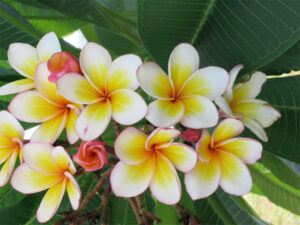Manipur got the most precious gift from China. Erstwhile Meetei Leibak reaches upto the modern day Yunan province. Meetei Leibak and Khagee Leibak (modern day Yunan province of China) have deep historical ties and cultural relationships.
The Chinese learnt the art of weaving silk fabrics and Thang Ta from the Meetei. This can be verified from the book “Economic Product of India” written by Sir James Watt and published in 1893 A.D.
Without any doubt, Meetei Leibak ( or Kangleipak) is the cradle for human civilization. The Lai people from the Koubru Mountains were scattered to different places in the Sub continents. Some of them reached even to Yunan Province.
Some of the Chinese anthropologist has supported the theory that early man in China originates from the area surrounding present day Manipur. The Tai or Lai peoples changed their settlements to establish the Tai-Lai Nan-Chao country at Yunnan at around 200-300 BC.
There were matrimonial alliance between Meetei and Khagee Leibak before Ningthou Kangba rules Meetei Leibak. Leima Ureinu was a Khagee princess. She was married to Ningthou Wankappa. Ningthou Kakshupa was the son of Leima Ureinu. The Khagee queen taught various handlooms designs to the Meetei subjects. She also brought many gift from China.
The peoples living in present day Yunan have many similarities in mythology, customs, traditions, law of inheritance with the people living in Meetei Leibak. A Manipuri researcher Hareswar Goswami on Myanmar and Yunan points out that the four gods of Yunan which is defending the four directions have very close to the Meetei gods.
Koubru is known as Kou-ren-gei in Yunan; Thangjing is known as Khak-len-chi ; Wangbren as Wang-hu-kup and Marjing as Maram-ching-hu-kup. This is not just coincidence but proof that the Lai people of Yunan province in China and Meetei of Manipur have same forefathers.
There are also striking similarities between the Meetei and Khagee in terms of languages. In Khagee, the Goddess of Wine is Yi-di and Goddess of Wine in Meetei in Yu-reima. The Khagee people worships the Household Deity like the Meetei’s Sanamahi. Several words have same meaning in both Meetei and Khagee. For example, Paper is called Che in both Khagee and Meetei, Name is known as Ming too.
From 1220 to 1327 A.D., the Mongols were invading major portion of the World. In the year 1250 A.D. a large number of Mongol army from Khangee Leibak (China) invaded Meetei Leibak during the reign of Iningthou Puranthaba. Their leader was Kublai Khan.
The Khagee army camped on the east bank of the Chindwin river. Iningthou Puranthaba, with a strong Meetei army proceeded against them and encamped on the western side of the Chindwin river. However, the Khagee armies retreated back to their kingdom due to internal conflicts.
During the reign of Meetei Ningthou Mungyamba in 1576 A.D., the Khagee Ningthou Piyango sent Moidana (or Mayadana) who was a fierce Chinese cannibal. Moidana was an expert in martial art fighter too. Khangee Ningthou Piyango could not control the cannibal. Therefore, he sent Moidana to Meetei Leibak to challenge the Meetei King on one-to-one combat.
Ningthou Mungyamba accepted the challenge and fought him using his sword name ‘Khoubomba’ and spear ‘Khangshunaha’. Moidana was ultimately defeated, killed, crushed and buried under a stone in Kangla. This stone is still found inside the Kangla in Meetei Leibak, known as “Lu Phou Nung”.
When the news of Ningthou Mungyamba slaying Moidana reached the Khagee Leibak, King Piyango came to Meetei Leibak. He stayed in Meetei Leibak and stayed for many months. The Khagee Ningthou brought many precious presents and one of them is Khagee Leihao. This flower is a precious gift from China.
This flower is a pagoda tree used for religious purposes in China. Scientific name of this flower is Plumeria acuminata. Khagee Leihao is a symbolic relationship of Meetei and Khagee Leibak for the younger generations.
Deeply impressed by the martial art techniques and effectiveness of Thang Ta, many of Khagee Ningthou attendants stayed and settled, as believed by many Thang Ta masters, at three places in present day Koutruk, Sengjam and Chirang in Imphal West district of Manipur. Some sources referred the Khagee people resides in a places known as Khagee Ingkhol, west to the Kangla.
The Khagee people also constructed the Hogaibi Sanathong inside the Kangla. The two Kangla sha in front of the Kangla Men Tongfam was also built by the Khagee people. The Thong Nambonbi (Humped Bridge) at Khwairamband Keithel was also built by Khagee people during the reign of Ningthou Khagemba. These are also the gift from China.
During 1630, Ningthou Khagemba attacked Khagee Leibak and captured Choupha Hongdei. Many prisoners of war were allowed to settle in Kameng, Chirang and Koutruk. They helped the Meetei to weave silk clothes, although Meetei were already aware of silk culture since a long time. The Khagee people also taught the art of brick making to the Meetei.
The Meetei king also sent his younger brother, Khuwairakpa Yaimaba to the court of Khagee Ningthou to safeguarding the Meetei from any aggressive attack by the Khagee. He returned to Meetei Leibak after staying for six months. The Khagee came to Meetei Leibak during the reign of Pamheiba as well.
Thus, the Meetei and Khagee people have strong historical and cultural relationships which need to be preserved and promoted in the coming days.
(C) Naorem Mohen
The Writer can be reached at Twitter @laimacha
Editor | Signpost News








You might find this interesting.
An article/ paper on the origin of Lai people by Prof. L.H Chuanawma of Mizoram University, Political Science Dept.